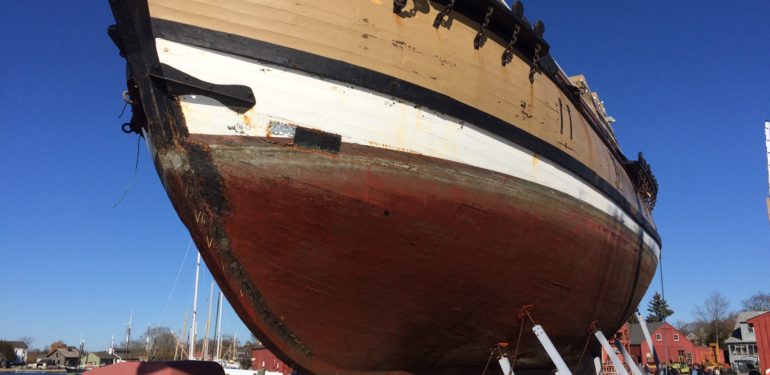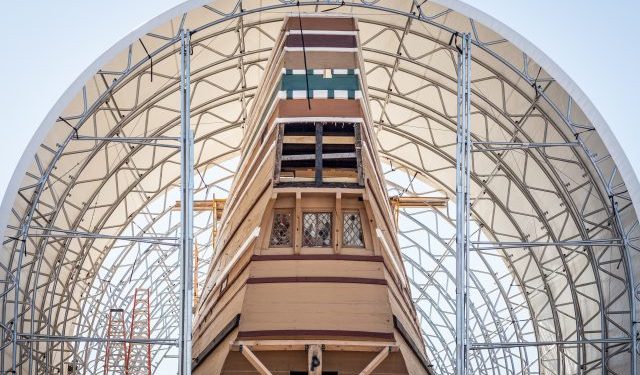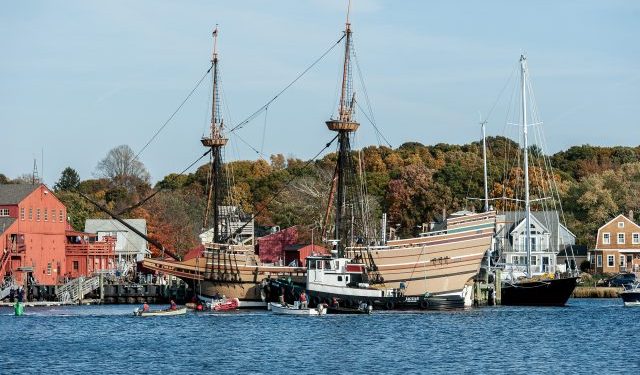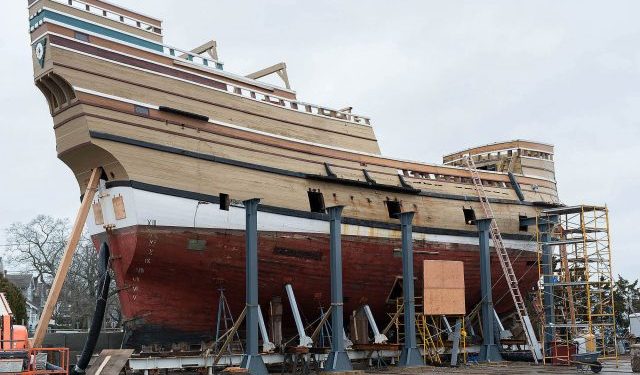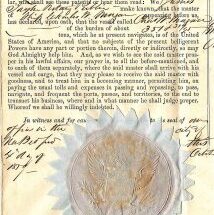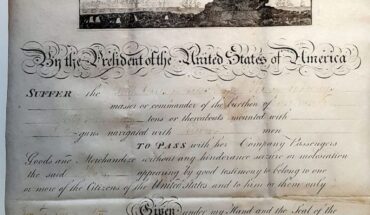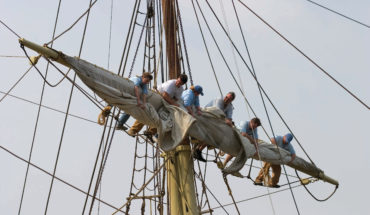Two sawmills slice massive logs of white oak into manageable pieces, sending sawdust floating through the air. Nearby, a shipwright shapes the pieces expertly with a broadax. Piece by piece, Mayflower II is being restored to her original grandeur, and it’s a sight to behold.
As craftsmen move these huge logs around the Shipyard, using hand tools to create a precise fit, it’s hard to imagine that one of the most difficult parts of the process is already over. But before the wood reaches the Shipyard, it must be sourced. And live oak – valued by shipwrights for its strength, density, and resistance to rot – is hard to come by.
Through a network of ship lovers, and a few strokes of luck, Mystic Seaport gathers live oak and white oak for its restoration projects. One of the most incredible finds came in 2013, when a construction crew in Massachusetts unearthed a soccer field’s worth of oak timbers. Buried in the mud of the Charlestown Navy Yard, the pristine pieces had been specifically selected for shipbuilding. They soon made their way down the coast and into the hull of the Charles W. Morgan.
When Hurricane Katrina hit Diane Brugger’s Mississippi bed and breakfast, she clung to a live oak in her yard for six hours awaiting rescue. After the storm, only two of the trees remained. Recently, one of these two live oaks was recently struck by lightning and removed, and it will be used to renovate Mayflower II. This oak joins 12 others from another Gulf Coast family, who have donated the trees in the wake of a power company construction project.
Both restoration projects and fallen trees are given new life in the Shipyard. In the case of Mayflower II, this salvaged wood has helped salvage an icon.

